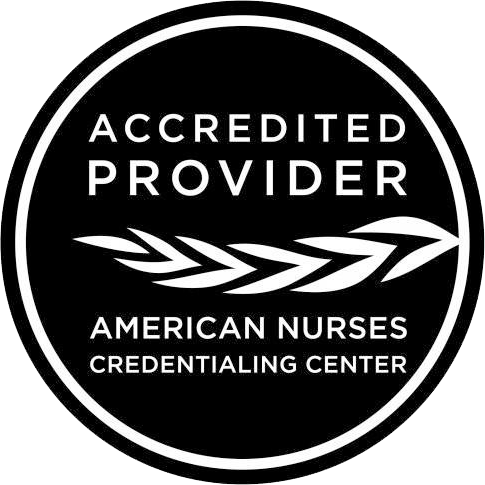
DEA Prescribing Rules, Regulations and Updates
-
Register
- User - $40
During the last 20 years, the rules and regulations regarding pain, opioid prescribing and opioid use disorder have changed significantly.
Attendees will be taught the latest and most up-to-date information on DEA’s authority and background, licensing, registration, drug diversion, telemedicine, medication assistance treatment, nationwide opioid prescribing guidelines and case studies, along with learning risk mitigation strategies and best practices that will safeguard their practices. The instructor is a former DEA Special Agent with over 30 years of public service with real life prescription opioid experience.
Credits: 1.50 Contact Hours; 1.00 are Pharmacology
Expiration Date: December 31st, 2025
$40
LEARNING OBJECTIVES
After taking part in this educational activity, participants should be better able to:
-understand DEA’s specific authorities and role in relation to controlled substances and the practice of medicine.
-articulate characteristics and red flags that are often seen in providers that result in license infractions or criminal charges.
-understand and articulate the two required components of a valid prescription under federal law.

Dennis A. Wichern
Dennis Wichern is a partner in PDC, where he focuses his efforts on DEA compliance, opioid risk mitigation initiatives and training services to protect providers, pharmacies, healthcare organizations and OTP’s nationwide. His experience includes 30 years of public service as a DEA Special Agent retiring in 2018 as the Special Agent in Charge of the Chicago Field Division where he directed all criminal and diversion control operations with a team of approximately 550 employees.
Dennis was the first to develop DEA compliance services and training relating to pain and prescription opioids, SAMHSA MAT and OTP’s regulations, hospital, pharmacy, ASC’s, and drug researcher protocols. Dennis is a recognized expert on the dangers of heroin and the prescription drug epidemic and routinely speaks to providers, healthcare organizations, ASC’s, OTP’s, and pharmacies to identify methods to better safeguard their practices and reduce the professional and operational risks emanating from these threats.
Dennis has been a guest lecturer on medical prescriber safeguards to medical students, residents, providers and medical staff specialists at Harvard Medical School, UCLA, Northwestern, Indiana University, the Illinois State Medical Society, and multiple hospital and professional organizations across the nation.
CE INFORMATION
Obtain Your Credits
To earn credits for this activity, navigate to the Content(s) tab and complete all course components in the following order: 1) watch the course presentation video; 2) complete the course evaluation; 3) pass the post-test with a score of 2/3 (66.7%) or higher. You may retake the post-test until a passing score is achieved, at which point you will be able to view/print a copy of your certificate of completion. This online certificate will also be saved within your profile 'My Dashboard' -> 'Transcript/Certificates Earned' for future access.
Designation Statement
NPACE designates this educational activity for a maximum of 1.50 contact hours, of which 1.00 is pharmacology credit. Participants should claim only credit commensurate with the extent of their participation in the activity.
Accreditation Statement
Nurse Practitioner Associates for Continuing Education (NPACE) is accredited as a provider of nursing continuing professional development by the American Nurses Credentialing Center’s Commission on Accreditation (ANCC).
In addition to ANCC, NPACE is approved as a provider of continuing education in nursing by: the California Board of Registered Nursing, Provider Number CEP8720 and Florida CE Broker #50-1476.
DISCLOSURES
Faculty
Contributing faculty, Dennis Wichern has no relevant financial relationships to disclose.
Planners
All planners and contributors involved in this educational activity have disclosed no relevant financial relationships.
Disclaimer
The material presented in this continuing education program is being made available for educational purposes only and is not intended to represent the best or only methods, medications and/or guidelines appropriate for the medical situation discussed. Rather the material is intended to present an approach, view, statement, or opinion of the presenter(s), which may be helpful, or of interest to other practitioners and should not be used by clinicians without the evaluation of their patient’s conditions and possible contraindications on dangers in use, review of any applicable manufacturer’s product information, and comparison with recommendations of other authorities. NPACE disclaims any liability, loss, injury, or damage incurred as a consequence, directly or indirectly, of the use and application of any information given in a presentation.
Disclosure of Unlabeled Use
This educational activity may mention the uses of products that are not approved by the FDA for the indication(s) being discussed. The presenter(s) are instructed to notify participants when they are discussing unapproved uses or investigational agents. The opinions related to unapproved uses of products are solely those of the presenter(s) and are not endorsed or recommended by NPACE. Please refer to the official prescribing information for each product for discussion of approved indications, contraindications, and warnings.
Commercial Support
There is no commercial support for this activity.

